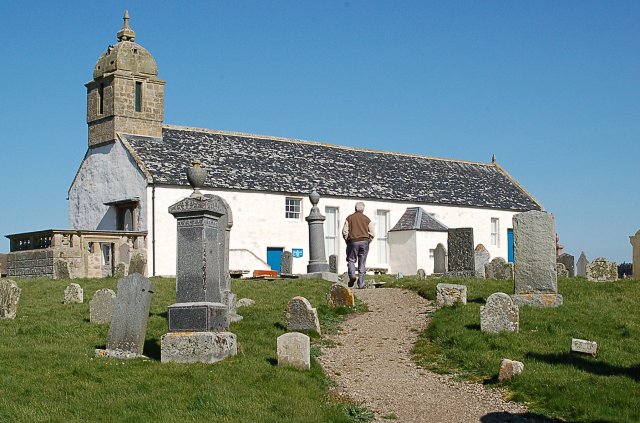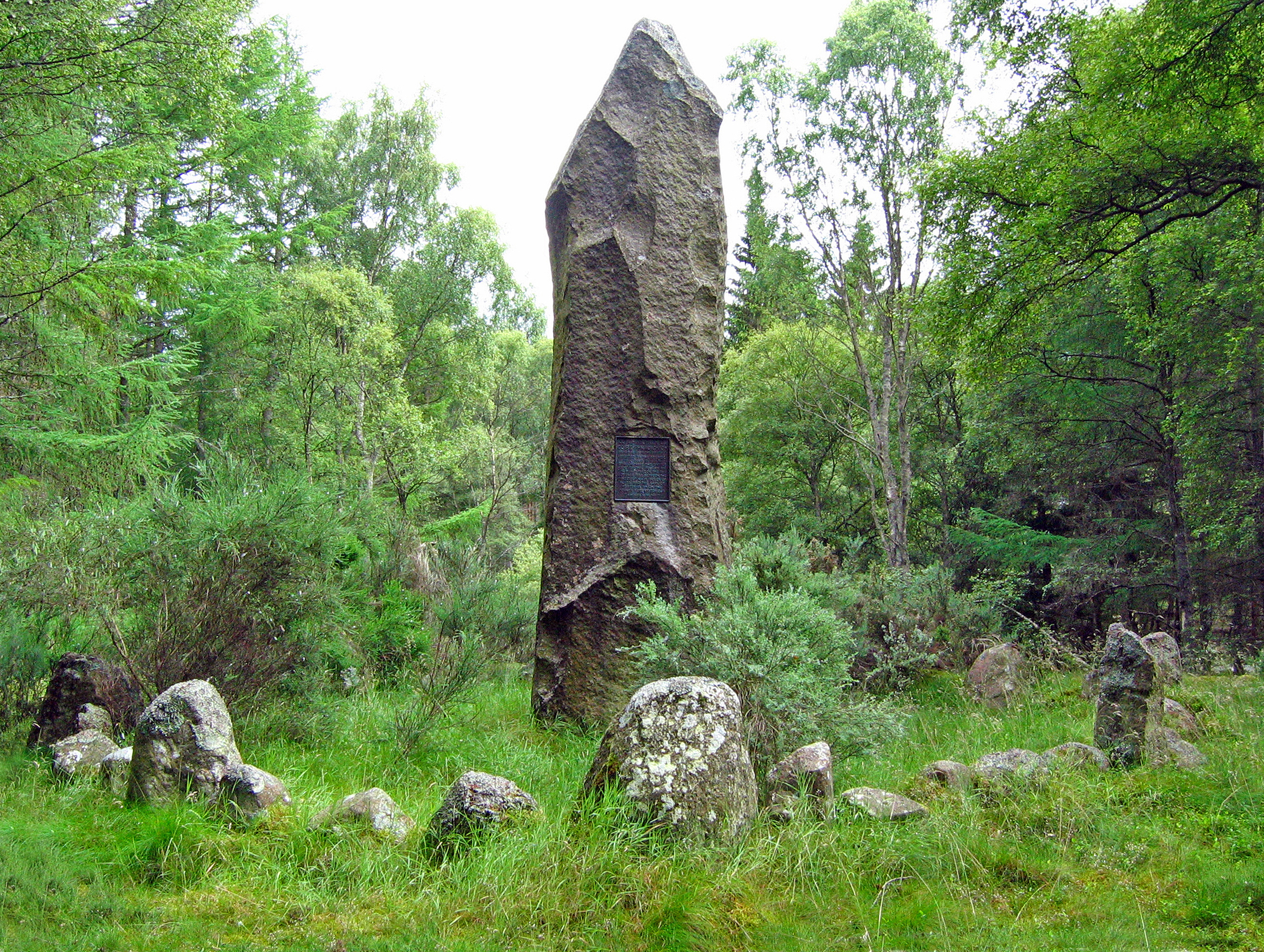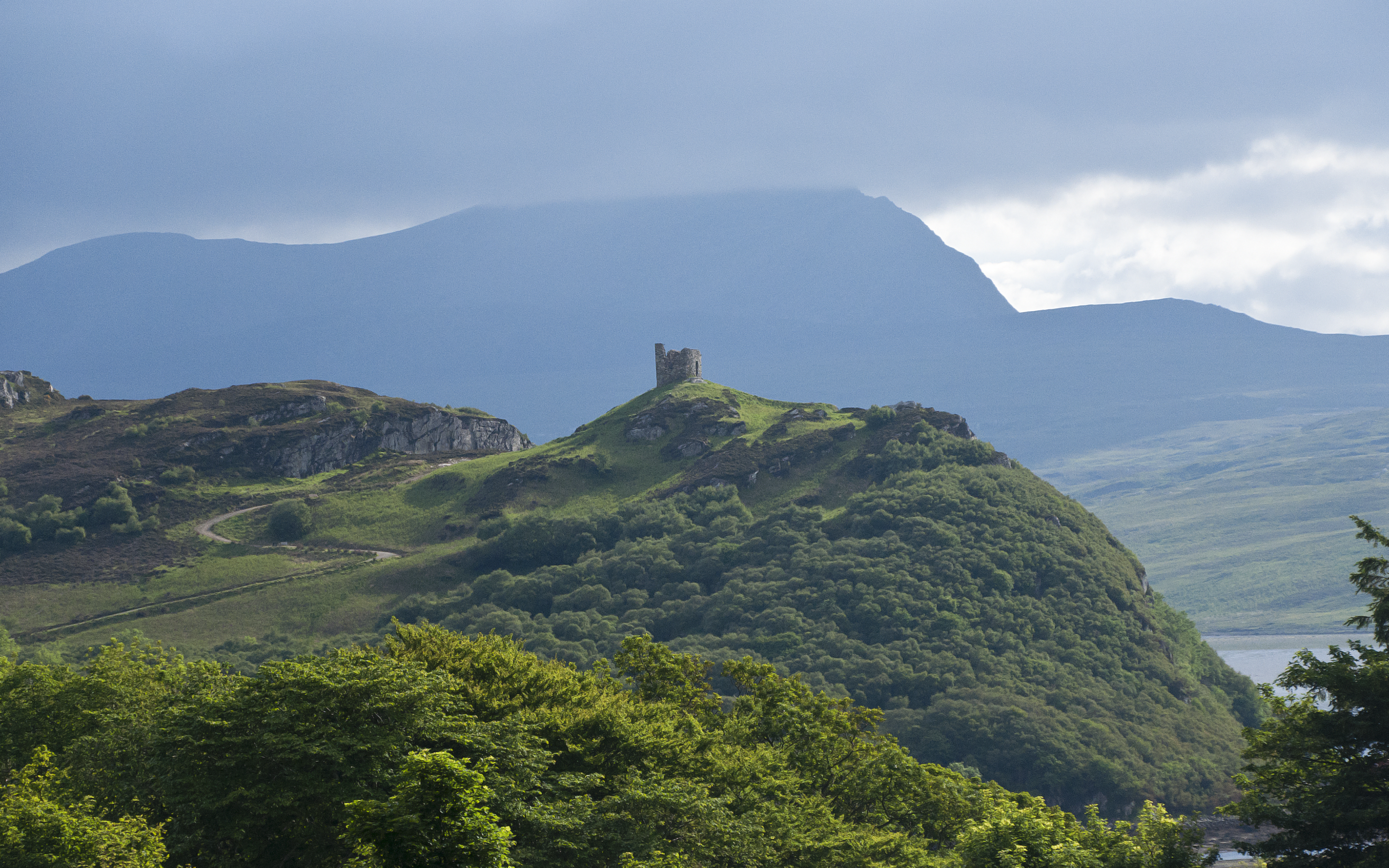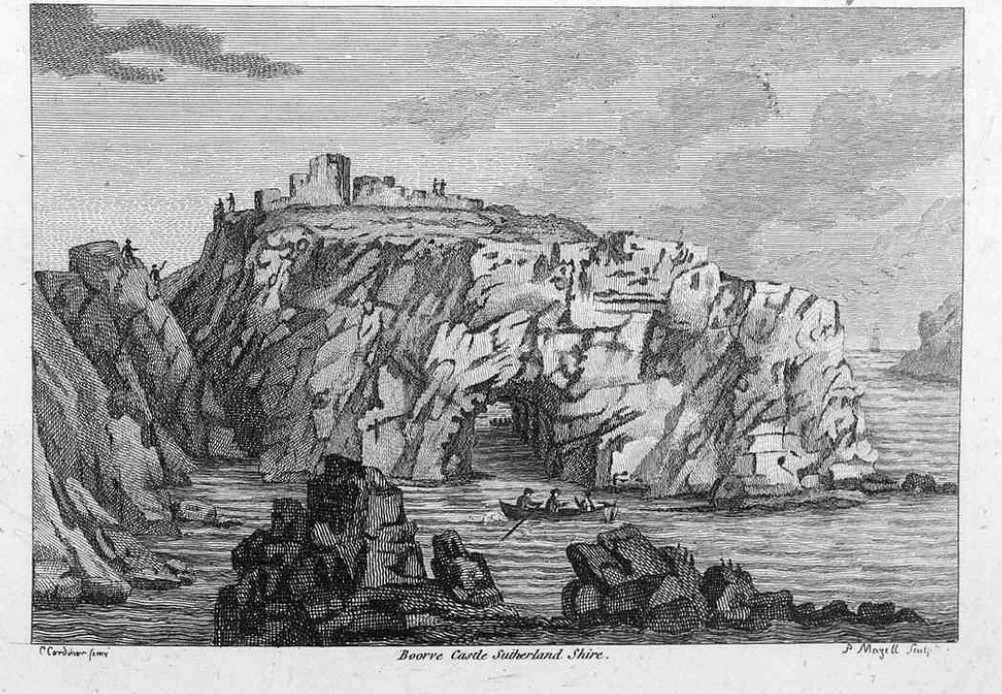Exploring Clan Mackay: Historic Sites and Notable Figures
by Aimee Li on Jul 13, 2024
Table of Content
I. Introduction
The storied history of Clan Mackay is rich with tales of valor, strategic strongholds, and influential leaders. Originating from the rugged landscapes of the Scottish Highlands, this ancient clan has left an indelible mark on Scotland’s heritage. From formidable castles that stood as bastions of power to charismatic leaders who guided their kin through tumultuous times, Clan Mackay’s legacy is a fascinating tapestry of resilience and leadership.
This article delves into the places and people shaping the proud and resilient spirit of Clan Mackay.
1.The Origin of Clan Mackay
Historian Angus Mackay, in his Book of Mackay (1906), compares the genealogies of Clan Mackay's early chiefs from two sources: Sir Robert Gordon, a historian from the 17th century, and Alexander Mackay of Blackcastle, a historian from the 18th to 19th centuries. Although both genealogies have similarities, they also show significant differences in the ancestry of the Mackay chiefs. Gordon's genealogy suggests a common ancestor with Clan Forbes and Clan Farquharson's chiefs due to a strong alliance in the 16th century.

On the other hand, according to Angus Mackay, the Blackcastle Manuscript provides a more accurate lineage. It states that Iye Mackay, the first chief of Clan Mackay, born around 1210, descended from Malcolm MacHeth, the 1st Earl of Ross. The manuscript hints at Malcolm MacHeth's ties to early rulers or Mormaers of Moray. It connects the arrival of the Mackays in Strathnaver to conflicts with King Malcolm IV, which led to their settlement and alliances in the north. This account suggests that Kenneth MacHeth, who died in 1215, might be the ancestor of the Stathnaver Mackays, with Iye Mackay taking over as chief and marrying the Bishop of Caithness's daughter in 1263.
2. Clan Mackay History
A. Wars of Scottish Independence
Major-General Stewart said Clan Mackay supported Robert the Bruce in the Battle of Bannockburn in 1314. Unfortunately, in the late 14th century, Chief Iye Mackay and his son were killed at Dingwall Castle by Nicholas Sutherland from a different branch of Clan Sutherland.
This led to more violence, like an attack on Dornoch in 1372, where the cathedral was burned, and some Sutherland men were hanged. The feud eased when both sides had to join forces against the English.
B. In the 15th century
In 1403, Clan Mackay and Clan MacLeod of Lewis fought at the Battle of Tuiteam Tarbhach because MacLeod found out his sister was mistreated and decided to raid Sutherland. MacLeod died in the battle. In 1411, Chief Angus Du Mackay supported the Stewart Confederacy against Donald of Islay for the Earldom of Ross.

Donald lost at the Battle of Dingwall but later made peace by marrying Angus's sister, Elizabeth. The Battle of Harpsdale in 1426 saw Angus Du Mackay and his son Neil fighting Caithness, with Neil getting captured. From 1429 to 1433, Angus Du Mackay led Clan Mackay to victory over Clan Sutherland at the Battle of Drumnacoub. In 1464, Clan Mackay and Clan Keith defeated Clan Gunn at the Battle of Tannach. Throughout the late 15th century, Clan Mackay and Clan Ross had constant conflicts, including the Battle of Tarbat in 1486, where the Mackays initially lost but then won at the Battle of Aldy Charrish against the Rosses.
C. In the 16th century
In the late 15th and early 16th centuries, Chief Iye Roy Mackay supported the Scottish Crown against Donald Dubh's rebellion. According to Clan Cameron tradition, Clan Mackay won a battle in 1505 and suffered significant losses at Flodden in 1513. They also fought in wars in 1544 and 1548.

Chief Iye Du Mackay was captured during the Siege of Borve Castle in 1555. Clan Mackay supported Mary, Queen of Scots, in the Battle of Corrichie in 1562. William Mackay helped defeat Clan Sinclair in 1586. The Mackay of Aberach branch sided with the Earl of Sutherland in 1586. Chief Huistean Du Mackay allied with the Earl of Sutherland in 1588.
D. In the 17th century
Thirty Years' War
In April 1616, Chief Donald Mackay was knighted by the king in London. By 1626, Sir Donald Mackay led 3000 men in Denmark's army during the Thirty Years' War. He became a Baronet of Nova Scotia in 1627 and Lord Reay in 1628. In 1630, he helped capture Stettin and Colberg while in Germany.

In 1631, Charles I allowed Lord Reay to recruit soldiers for Sweden, but he faced challenges like being imprisoned in the Tower of London after a duel. Gustavus Adolphus's death in 1632 made it difficult for Lord Reay to receive his payment from the king.
Civil War
In 1638, Donald Mackay reluctantly signed the Covenant with his son due to loyalty to Charles I. Plans to make him Earl of Strathnaver were halted when Charles I was executed in 1649. He died in exile in Denmark in February 1649. In 1651, Clan Mackay warriors fought in the Battle of Worcester alongside the Duke of Hamilton, supporting Charles II.

In 1680, George Mackay became the 3rd Lord Reay under the care of his grandfather, Sir George Munro. In 1689, General Hugh Mackay stationed 100 soldiers from the Mackay clan in Brahan Castle to watch over the Mackenzies for William, Prince of Orange. Sadly, General Mackay died at the Battle of Steinkirk in 1692.
E. In the 18th century
Jacobite rising of 1715

1715 Clan Mackay backed George I of Great Britain in the Jacobite rising. They defended Inverness Castle and fought against Mackenzie, Earl of Seaforth at Alness. Additionally, in 1719, 80 soldiers from Clan Mackay won against the Jacobites at the Battle of Glen Shiel.
📜 You can read more: The Best Castles in Scotland: From History to Highland Beauty
Jacobite rising of 1745

In 1745, Clan Mackay backed the British Government during the Jacobite rising. They created the Clan Mackay Independent Highland Companies, with support from Loudon's Highlanders, and stopped gold meant for Charles Edward Stuart in the Skirmish of Tongue. Ensign John Mackay led them in the Battle of Littleferry in 1746, where they beat the Jacobites and caught George Mackenzie, 3rd Earl of Cromartie, at Dunrobin Castle.
📜 Please also see more Clan Mackay History at Clan Mackay History: Origins and Ancestral Roots
II. Clan Mackay Places: Key Locations Associated with Clan Mackay
1. Castle Varrich
Castle Varrich, also known as Caisteal Bharraich in Scottish Gaelic, is located in the far north of the Scottish Highlands, close to Tongue village. Positioned on a rocky high point, the castle overlooks both the Kyle of Tongue and the town itself. Despite its prominent location, the exact origins and age of the castle remain a mystery.

Castle Varrich was once the ancient residence of the Clan Mackay chief, who was believed to be more than a thousand years old. Legend has it that there are caves beneath the castle where the Mackays once lived. It is thought that the Mackays constructed their castle on this site in the 14th century, possibly on top of an older Norse fort. The castle walls, which are around 1.4 meters (5 ft) thick or even thicker, were built using roughly squared blocks of metamorphosed sandstone rock of various thicknesses. These stones were laid without mortar yet have endured remarkably well over the centuries despite the harsh local weather conditions.

Featuring two floors and an attic, the ground floor of the castle was likely used as stables, with access through a door on the north wall. Interestingly, no stairs were connecting the floors, indicating that the ground level may have been intended for animals. The upper floor could be reached from the south side by a ladder or removable stairway. Although a window and fireplace once adorned the castle, they have since deteriorated beyond recognition. Eventually, the clan chief's residence shifted to Tongue House. A designated footpath leads from Tongue to Varrich Castle.
2. House of Tongue
Tongue House became the traditional residence of Clan Mackay after they left Castle Varrich. It served as the primary residence of the Mackay chief, Lord Reay. The Dukes of Sutherland later acquired Tongue House and still own it today. The castle ruins, constructed in the eleventh century in Tongue after the clan was forced out of their original home in Moray to Sutherland, are a popular tourist spot. A succession battle between two factions of the clan took place around 1427 to 1433, leading to the Battle of Drumnacoub on Carn Fada, situated between the Kyle and Ben Loyal.
3. Borve Castle
Borve Castle, also known as Farr Castle, is located in Farr, Sutherland. It is believed to have been originally built by a Norseman named Torquil. It served as a stronghold for Clan Mackay, who used it as a base for raiding their neighbors, Clan Sutherland. When the Mackays did not show up before Mary of Guise, the mother of Mary, Queen of Scots, John Gordon, 11th Earl of Sutherland, leader of Clan Sutherland, was instructed to destroy the castle.

The Borve castle was partially demolished and occupied by forces loyal to the Queen Regent, led by John Williamson. Helena Sinclair, the widow of Donald Mackay of Strathnaver, provided supplies for the garrison. Rory Mor Mackay was executed, while Iye Du Mackay, 12th of Strathnaver, was imprisoned in Dumbarton and later in Edinburgh Castle.

Following the capture of Borve Castle, a group from Clan Mackay gathered under John Mor Mackay and clashed with Clan Sutherland in the Battle of Garbharry, resulting in a victory for the Sutherlands. This battle marked the final conflict between the two clans. Today, Borve Castle stands in ruins.
4. Balnakeil House

5. Dounreay Castle
Dounreay Castle, also known as Dounreay House, is a ruined L-plan castle located approximately 8 miles (13 km) west of Thurso in the Highland region of Scotland, situated within the grounds of Dounreay Nuclear Power Development Establishment. Dounreay Castle is believed to have been built towards the end of the 16th century and was once owned by the Sinclairs. William Sinclair of Dunbeath was recorded as the owner in 1614, and in 1726, it served as one of the lodgings for the Earl of Caithness.

Over time, ownership of the Dounreay Castle passed to the Forbeses, then to the Mackays of Reay, and finally to the Mackays of Tongue. Occupation of the castle continued until 1863, but by 1910, it had fallen into disrepair and was without a roof. The site was repurposed as a farm, with the courtyard serving as the farmyard. It is believed that the first of two rows of cottages were added southeast of the castle in the 17th century.
6. Scourie Castle
Scourie Castle in Scourie, Sutherland, is the headquarters of the Mackays of Scoury, a branch of the ancient Clan Mackay. In 1640, it was the birthplace of Hugh Mackay, a Scottish general who settled in the Netherlands and commanded the forces of William III at Killiecrankie in July 1689.
The last of the Mackays' Scottish estates, including Scourie, were sold to the Earl of Sutherland in 1829, and the later Scourie House dates from 1864.
III. Clan Mackay Chief: Prominent Leaders and Chieftains
1. Aeneas Simon Mackay, 15th Lord Reay
Aeneas Simon Mackay, the 15th Lord Reay, is a British financial expert who holds the position of hereditary Clan Chief of Clan Mackay. He is also known as Lord of Ophemert and Zennewijnen in the Netherlands, where he manages Castle Ophemert. Lord Reay became a member of the House of Lords in January 2019 after winning a by-election for hereditary peers. He is an active Conservative member of the House and is involved in Lloyd's.

In his role as a military leader, Lord Reay played a vital part in protecting Clan Mackay's interests and taking part in important battles of his era. His skillful strategies and leadership abilities were evident in his actions in Scotland and abroad. Besides his military and political achievements, he also made significant contributions to cultural and social aspects, creating a legacy that is still respected within Clan Mackay and the wider Scottish community.
2. Hugh William Mackay, 14th Lord Reay
Hugh William Mackay, the 14th Lord Reay, played a key political role as a Conservative member of the House of Lords. He became the only male Lord in the House of Lords after the removal of the automatic right for all British hereditary peers to sit there in 1999. Inheriting his title in 1963 after his father's death, he initially sat in the House of Lords as an independent member. Later on, he switched to the Liberal Party before finally joining the Conservative Party in 1972.
Throughout his political career, Lord Reay championed various causes, such as the abolition of capital punishment and the implementation of restrictions on onshore wind farms. He actively engaged in political and public matters, making significant contributions to the governance and progress of Scotland. His leadership and efforts had a notable impact on the political scene and the well-being of the people he represented.
3. Donald James Mackay, 11th Lord Reay
Donald James Mackay, the 11th Lord Reay, was a British administrator and Liberal politician with Dutch roots. He took over from his father in 1876 and became a British citizen in 1877. In 1881, he was made Baron Reay of Durness in Sutherland, UK. When he returned to Britain, he served as Under-Secretary of State for India from 1894 to 1895 in Lord Rosebery's Liberal government. Lord Reay also represented Britain at the Second Peace Conference, which resulted in the signing of the Hague Convention in 1907.

Lord Reay's most significant political moment came during the crisis over the People's Budget of 1909–10, when the House of Lords, breaking a long-standing tradition, rejected the Budget. He strongly opposed this move and famously cautioned that Oligarchies are seldom destroyed and more often bring about their downfall.
📜 Please also see more clan chiefs at clanmackaysociety.co.uk
Set sail on an odyssey through the illustrious annals of Clan Mackay with our handpicked collection of tartan creations. Embody the indomitable spirit that characterizes the Mackay clan, weaving a piece of this noble history into the fabric of your daily existence:
IV. Conclusion
In conclusion, the legacy of Clan Mackay reverberates through the annals of Scottish history, marked by its formidable castles and visionary leaders. Their strongholds stood as bastions of power amidst turbulent times, reflecting the resilience and strategic acumen of the clan. From the rugged landscapes of the Highlands to the halls of influence, Clan Mackay’s story embodies a testament to fortitude, honor, and enduring heritage. Their castles and leaders continue to inspire admiration, ensuring that the legacy of Clan Mackay remains etched in the hearts and minds of generations to come.
Frequently Asked Questions
Where did the MacKay clan live?
Historically, clan MacKay was one of the most powerful of the ancient Highland clans. They fought in many battles, both with their neighboring clans and against the rebelling Jacobite forces, and occupied a large amount of territory in the north of Scotland, in the area once known as Strathnaver.
What is the famous MacKay clan?
Clan Mackay is famous for long-running feuds with several neighboring Highland clans, including Macleod of Lewis, Ross, and Sutherland. The Mackay feud with Clan Sutherland is one of the most well-documented and was ongoing between the 14th and 16th centuries.
What is the Mackay clan symbol?
MacKay Clan Crest: An arm with the hand holding a dagger. MacKay Clan Motto: Manu Forti (With a strong hand).
Who is the chief of clan Mackay?
Aeneas Mackay: current clan chief.







